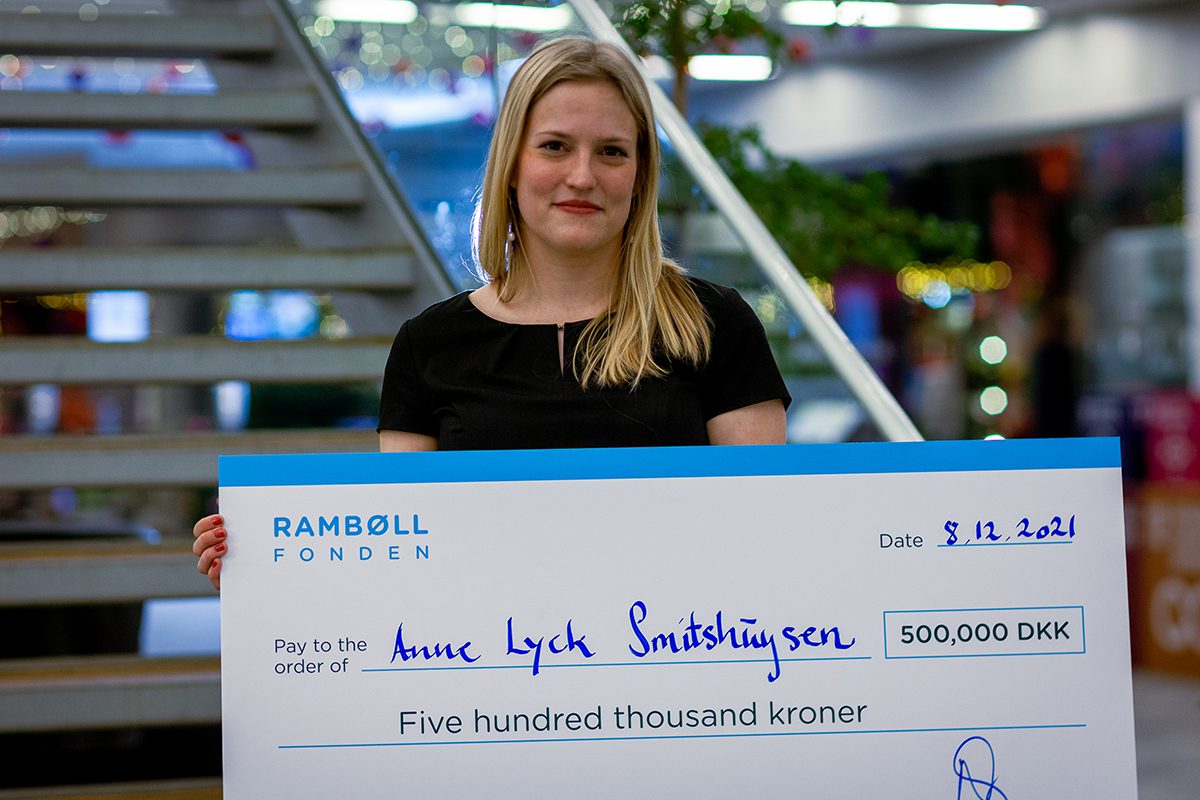
A young Danish researcher has seemingly succeeded in developing a technology that will reduce the costs of getting wind power into the tanks of heavy-duty vehicles by approximately 15 percent. In recognition of her research, she has received an award worth €67,000.
Green hydrogen produced from renewable energy, such as solar and wind, is expected by many to play a major role in the energy system of the future. The green fuel can be used for trucks and other heavy-duty vehicles, and it can also be a way of storing energy from renewable sources when the sun is not shining, and the wind is not blowing. But how big a role it will play depends to a large extent on price. Today, green hydrogen is about three times more expensive to produce than fossil fuels. Hydrogen production costs are primarily determined by electricity prices, investment costs, and the efficiency of the electrolysis plants converting green electricity to hydrogen.
Now, a young Danish researcher specialised in electrolysis technology has made a potential global breakthrough: Anne Lyck Smitshuysen has invented a technology that will reduce the costs of green hydrogen production by approximately 15 percent. This will be done by increasing the size of the electrolysis cells, which, by means of electricity, split water molecules into hydrogen and oxygen.
“Through my research, I have discovered that it is possible to increase the size of the cells from the current standard of 150 cm2 to 1000 cm2 without them breaking during manufacturing. This is the equivalent of scaling a slice of toast to a computer screen,” says Anne Lyck Smitshuysen, who is completing her business PhD in a collaboration between the Power-to-X start-up company DynElectro and the Technical University of Denmark with support from the Innovation Fund Denmark.
With significantly larger cells, the material costs of an electrolysis plant, primarily related to steel which makes up most of the materials, can be halved. Thereby, the price of cell and stack production can be reduced by up to 50 percent, which in turn will reduce the production cost of green hydrogen by approximately 15 percent.
International breakthrough in Power-to-X
In recognition of her research, Anne Lyck Smitshuysen receives the Flemming Bligaard Award 2021 worth €67,000. The prize is awarded by the Ramboll Foundation to an excellent early career researcher, whose work makes an extraordinary contribution to sustainable development. The Ramboll Foundation is a commercial foundation that owns Ramboll.
“Anne Lyck Smitshuysen’s work is a technological breakthrough in Power-to-X research that will have a major impact on the future production of green hydrogen. With the Flemming Bligaard Award we want to help accelerate her research, which will be crucial not only for Denmark but also for the rest of the world’s path towards net-zero,” says Robert Arpe, chairman of the Ramboll Foundation. “Anne Lyck Smitshuysen is at the same time a role model and a great source of inspiration for other young people seeking a career within the field of engineering and science,” adds Robert Arpe.
Anne’s research findings are an international breakthrough on the global Power-to-X arena and solve a problem that other researchers around the world have been trying to solve for decades. The electrolysis cells tend to curl up and become useless when they are heated to 1300 degrees Celsius during manufacturing – something that has made it impossible for them to increase in size.
“I found that by first shaping the cells in a 3D printed form matching the shrinkage that occurs during the subsequent heating, you can increase the size by over 500 percent without them curling and becoming useless,” says Anne Lyck Smitshuysen.
Anne Lyck Smitshuysen will use the Flemming Bligaard Award from the Ramboll Foundation for buying equipment to fabricate the cells and monitor how they behave during manufacturing.
Technological moon landing can make hydrogen competitive long before the goal
According to the European Commission, pure hydrogen is estimated to cover 24 percent of the world’s energy needs by 2050. The price of electrolysis-based hydrogen is currently almost USD 4 per kilogram. If hydrogen is to compete with fossil fuels and if Denmark is to become relevant as an export country for the green fuel, the price must be halved to a maximum of USD 2 per kilogram according to Danish Energy, with an expectation that this can be achieved by 2030.
“The market potential for hydrogen production is enormous, and if we in Denmark are the first to create technologies to produce hydrogen at competitive prices, the export market potential will be huge,” says Søren Højgaard Jensen, CEO of DynElectro, where Anne Lyck Smitshuysen is employed, and which today counts five engineers and researchers working with electrolysis technology.
“Anne’s method represents a technological moon landing within Power-to-X, which we have patented in Europe, the USA and several Asian countries. The technology will contribute significantly to the green transition globally when it enters the market in two to three years. Once it has been scaled up, the price for green hydrogen will fall well below USD 2 per kilogram even long before 2030. The technology alone will be the reason why green hydrogen will be able to cover 24 percent of the world’s energy needs already around 2035 – about 15 years before the EU Commission today considers it possible,” says Søren Højgaard Jensen. He expects that within 10 years, DynElectro will have approximately 300 employees working with cell and stack manufacturing based on Anne Lyck Smitshuysen’s method.







